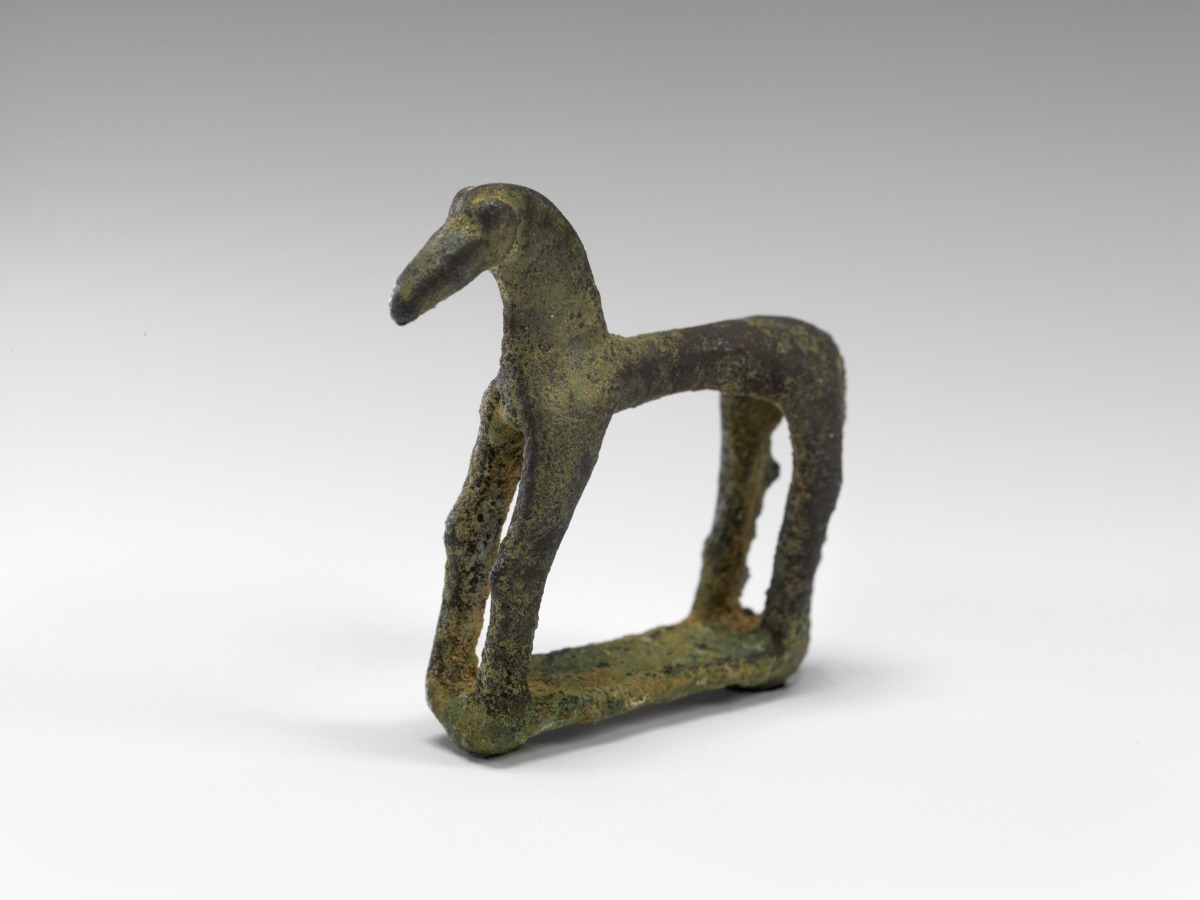
Statuette of a Horse (Primary Title)
Unknown (Artist)
Horses were the most common bronze dedications to the gods during the Geometric period, in part because they were symbols of the aristocracy (called hippeis, knights), who had the resources to maintain actual horses. Based on comparisons with other examples, this horse is thought to have been made in the region of Elis, where the first Olympic Games were held in 776 BC.
Adolph D. and Wilkins C. Williams Fund
"The Horse in Ancient Greek Art," National Sporting Library and Museum, Middleburg, VA, September 7, 2017 – January 14, 2018; VMFA, February 17 – July 8, 2018
"Idea into Image: Sculpture", Artmobile exhibition, September 1975 - May 1977
"Idea into Image: Sculpture", Artmobile exhibition, September 1975 - May 1977
June 1956 (Herbert Cahn, Münzen und Medaillen, A.G., Basel); [1] sold June 30, 1956 to Virginia Museum of Fine Arts (VMFA), Richmond; accessioned into VMFA collection on November 15, 1956. [2]
[1] Auktion 16 (30 June 1956), no. 14, pl. 5.
[2] Information in VMFA Curatorial and Registration records.
[1] Auktion 16 (30 June 1956), no. 14, pl. 5.
[2] Information in VMFA Curatorial and Registration records.
Image released via Creative Commons CC-BY-NC
Some object records are not complete and do not reflect VMFA's full and current knowledge. VMFA makes routine updates as records are reviewed and enhanced.

